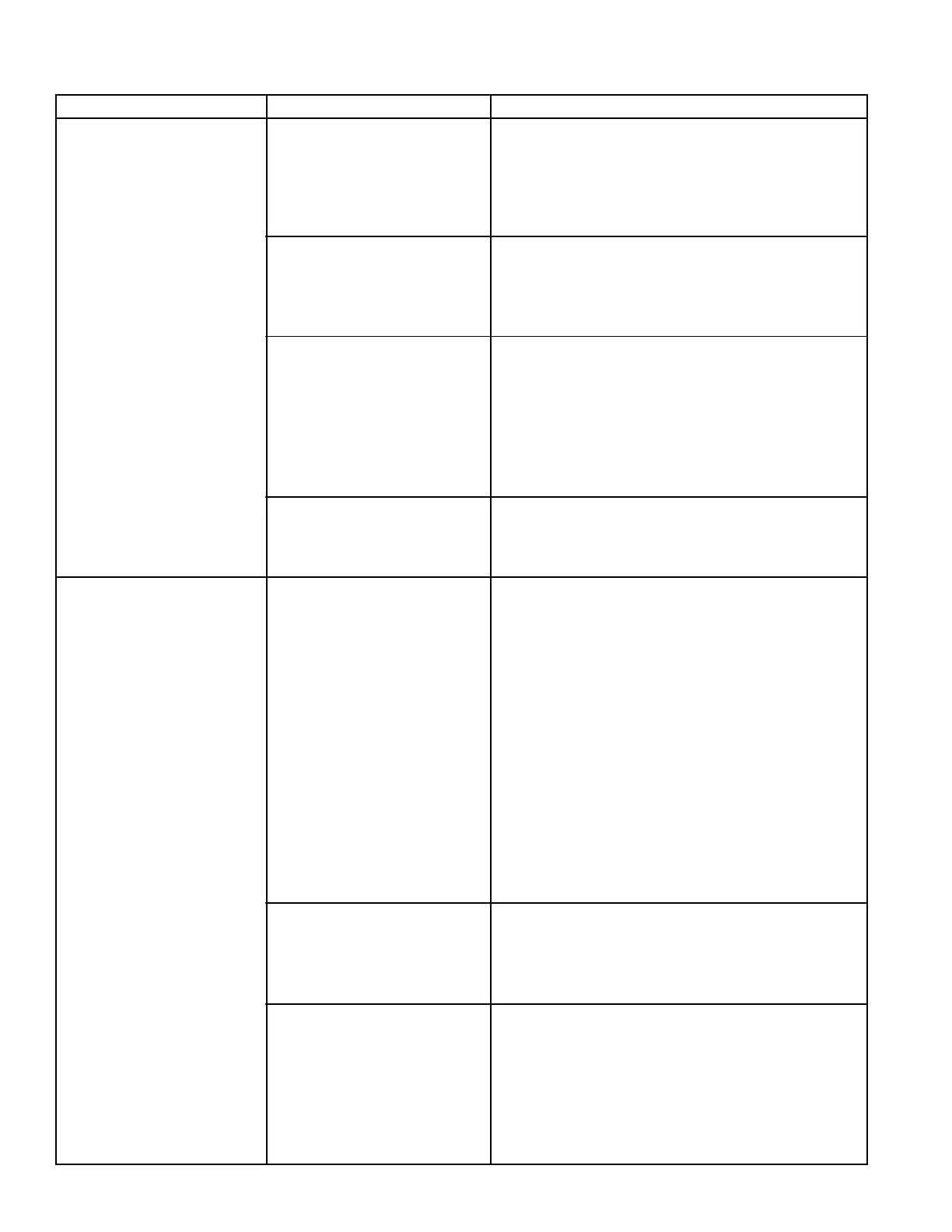12
COMPRESSOR TROUBLESHOOTING CHART (Continued)
SYMPTOMS CAUSE
REMEDY
1. (Continued.) F. Compressor runs loaded F. Vehicle system leakage should not exceed indus-
an excessive amount of try standards of 1 psi pressure drop per minute
time. without brakes applied and 3 psi pressure drop
per minute with brakes applied. If leakage is
excessive, check for system leaks and repair.
G. Excessive engine G. Test for excessive engine crankcase pressure &
crankcase pressure. replace or repair ventilation components as
necessary. (An indication of crankcase pressure
is a loose or partially lifted dipstick.)
H. Excessive engine oil H. Check the engine oil pressure with a test gauge
pressure. and compare the reading to the engine specifica-
tions. Bendix does not recommend restricting the
compressor oil supply line because of the
possibility of plugging the restriction with oil
contaminants. Minimum oil supply line size is
3/16" I.D. tubing.
I. Faulty compressor. I. Replace or repair the compressor only after
making certain none of the preceding installation
defects exist.
2. Noisy compressor A. Loose drive gear or A..Inspect the fit of the drive gear on the compres-
operation. components. sor crankshaft. The gear or coupling must be
completely seated and the crankshaft nut must
be tight. If the compressor crankshaft surface is
damaged, it is an indication of loose drive
components. If damage to the compressor
crankshaft is detected, replace the compressor.
When installing the drive gear or pulley, torque
the crankshaft nut to the appropriate torque
specifications and use care when pressing drive
components onto the crankshaft.
Do not back off the crankshaft nut once it is
tightened to the proper torque.
Do not use impact wrenches to install the
crankshaft nut.
B. Excessively worn drive B. Inspect drive gear and couplings and engine for
couplings or gears. excessive wear. Replace as necessary.
(Nonmetallic gears should be replaced when the
compressor is changed.)
C. Compressor cylinder head C. Inspect the compressor discharge port and
or discharge line discharge line for carbon build-up. If carbon is
restrictions. detected, check for proper cooling to the
compressor. (See Cause and Remedy (D) under
Symptom #1.) Inspect the discharge line for kinks
and restrictions. Replace discharge line as
necessary.

